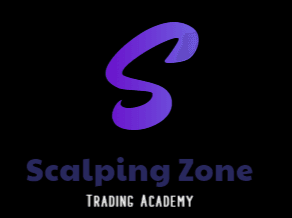Mastering Vertical Trading: Strategies for Staying Ahead of the Curve
Vertical trading is a strategy that can help businesses stay ahead of the curve in an ever-evolving market. By focusing on a specific industry or niche, companies can gain a deep understanding of their customers' needs and tailor their products or services accordingly. In this blog post, we will explore some key strategies for mastering vertical trading and staying ahead of the competition.
1. Research and Identify Your Target Market
The first step in mastering vertical trading is to research and identify your target market. This involves understanding the industry trends, customer demographics, and buying behaviors. By gathering this information, you can develop a comprehensive understanding of your customers' needs and preferences.
Image: vertical trading
2. Build Strong Relationships with Suppliers
Building strong relationships with suppliers is crucial for vertical traders. By forging partnerships with reliable suppliers, you can ensure a steady supply of high-quality products or materials. Additionally, strong relationships can lead to better pricing, exclusive deals, and access to new product lines.
3. Develop Specialized Expertise
In vertical trading, having specialized expertise is key to success. By focusing on a specific industry, you can become an expert in the field and provide valuable insights and solutions to your customers. This expertise will set you apart from generalist competitors and position you as a trusted authority.
Image: specialized expertise
4. Stay Abreast of Industry Trends
Staying up-to-date with industry trends is essential for vertical traders. By monitoring market changes, emerging technologies, and consumer preferences, you can adapt your strategies and offerings accordingly. This proactive approach will help you stay ahead of the curve and anticipate your customers' future needs.
5. Tailor Your Products or Services
One of the main advantages of vertical trading is the ability to tailor your products or services to meet the specific needs of your target market. By understanding your customers' pain points and preferences, you can develop customized solutions that provide maximum value. This personalized approach will help you build strong customer relationships and foster loyalty.
Image: tailored products
6. Leverage Technology
Technology plays a vital role in mastering vertical trading. By leveraging tools such as data analytics, CRM systems, and e-commerce platforms, you can streamline your operations, improve customer experiences, and gain a competitive edge. Embracing technology will enable you to stay efficient and agile in a rapidly changing market.
7. Network and Collaborate
Networking and collaboration are essential for vertical traders. By attending industry events, joining trade associations, and connecting with like-minded professionals, you can expand your knowledge, share insights, and explore potential partnerships. Building a strong network will open doors to new opportunities and help you stay ahead in your vertical.
Image: networking
8. Continuously Innovate
Innovation is the key to long-term success in vertical trading. By continuously seeking new ways to improve your products, services, and processes, you can stay ahead of the competition and meet evolving customer demands. Encourage a culture of innovation within your organization and embrace feedback from customers and employees.
By implementing these strategies, businesses can master vertical trading and position themselves as leaders in their respective industries. Remember, vertical trading requires dedication, research, and a deep understanding of your target market. Stay proactive, adapt to changes, and always strive for excellence.
